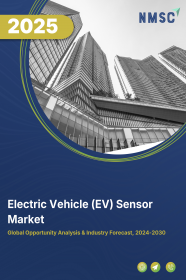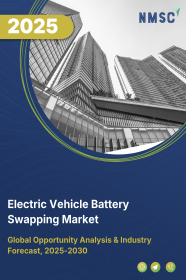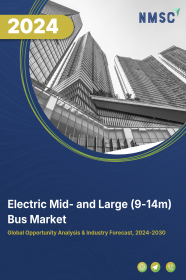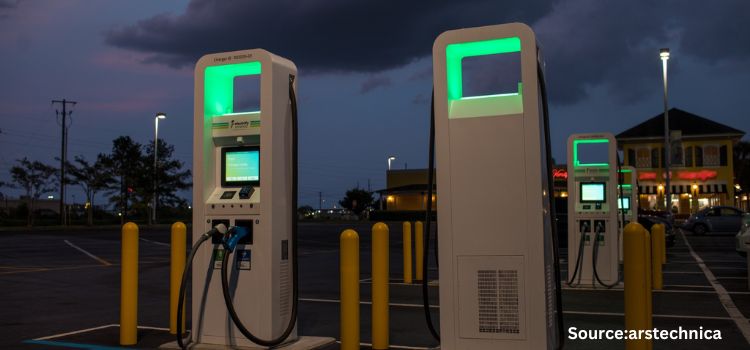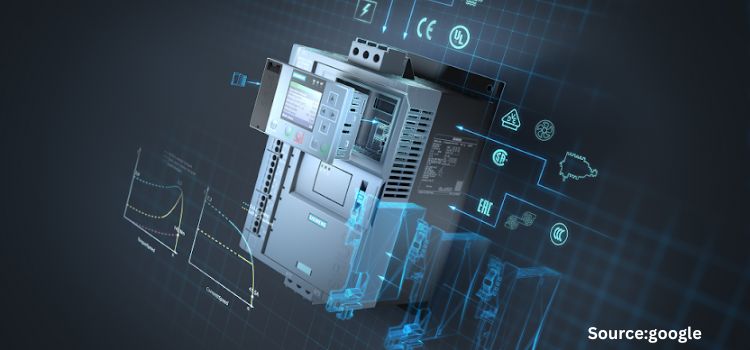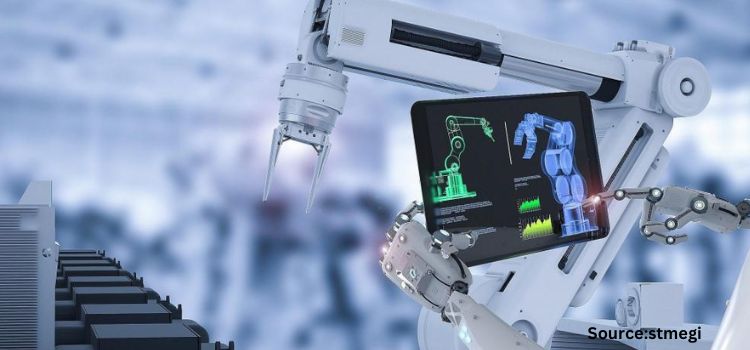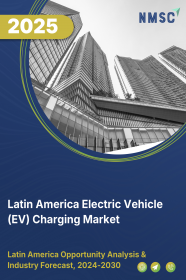
Latin America Electric Vehicle (EV) Charging Market By Type of Charger(AC Chargers, DC Chargers), By Charging Speed (Level 1,Level 2,Level 3), By Connector Type (J1772 (Type 1), Mennekes (Type 2),CCS (Combined Charging System),CHAdeMO, Others), By Charging Modes (Mode 1, Mode 2, Mode 3, Mode 4), By Installation (Fixed, Portable) , By End User (Commercial, Residential)– Regional Opportunity Analysis and Industry Forecast, 2024–2030
Industry: Automotive & Transportation | Publish Date: 01-Mar-2025 | No of Pages: 194 | No. of Tables: 159 | No. of Figures: 104 | Format: PDF | Report Code : AT874
US Tariff Impact on Latin America Electric Vehicle (EV) Charging Market
Trump Tariffs Are Reshaping Global Business
Market Definition
Latin America Electric Vehicle (EV) Charging Market was valued at USD 225.9 million in 2023, and is predicted to reach USD 1124.8 million by 2030, with a CAGR of 26.4% from 2024 to 2030. Electric vehicle chargers are characterized by the rate at which they deliver energy to the vehicle's battery. They serve as a vital infrastructure connecting plug-in electric vehicles to electrical outlets for the purpose of recharging the vehicle's battery. These chargers facilitate the charging process by supplying the necessary electrical energy to the EV's battery.
Charging stations are compatible with electric vehicles, neighborhood electric vehicles (NEVs), and plug-in hybrids, allowing them to connect to an electrical source for charging. Some charging stations come equipped with advanced functionalities such as smart meters, cellular connectivity, and network access.
The charging of EVs can be carried out through several levels of charging such as level 1, level 2, and level 3. The higher the level of charging, the faster the charging process causing more power to be delivered to the vehicle. The use of electric vehicles significantly reduces the carbon footprints released into the atmosphere, which contain toxic gas. The growing threat of carbon emissions and other harmful gases stemming from transportation has triggered the vital necessity of adopting electric vehicles.
In addition, the penetration of EV charging is high in commercial spaces as compared to residential ones. Long-distance trips would benefit from ultra-fast charging capabilities made possible by public charging infrastructure. However, EV chargers for residential spaces offer significant growth potential as they are affordable and more convenient for charging electric vehicles as compared to commercial charging stations.
Surging Demand for Electric Vehicles Drives Market Growth in Brazil and Argentina
Latin America comprises of Brazil and Argentina. In Brazil, the market for electric vehicles has grown significantly during the past 14 years. Only in 2020 did sales of automobiles surpass 19,700 units, an increase of 66.5% over those of the previous year. The rising number of EVs among the population to minimize the use of fuels and environmental concerns boost the growth of the market.
According to the Brazilian Association of Electric Vehicles (ABVE), with an absolute record of 34,990 units sold and 79,800 cars in circulation in 2021. In a program from the Efficient Electric Mobility Solutions initiative, 30 various plans are boosting Brazil's EV charging infrastructure. The program has been put together by Brazil’s electric energy regulator Aneel with a total budget of USD 110 million, of which USD 93 million comes from the regulator’s research and development program. Volvo started installing 250 EV charging stations, and the company wants to reach 500 by the end of the year. BMW is also working in cooperation with local companies, such as the service station network Ipiranga and aims to install some 180 EV charging points.
Key Market Players' Product Launch Strategies Fuel Growth in the EV Charging Market
The presence of key players in the market engaged in various strategies such as product launches is expected to create ample growth in the EV charging market. For instance, in October 2022, Raizen inaugurated its first Shell recharge location in Argentina, the equipment has a capacity of 50 kW for recharging and is capable of charging two vehicles at the same time.
Additionally, in March 2022, Shell announced to installation first EV chargers in the service station network. The company is presently evaluating the initiative through a partnership with Audi and Volkswagen and has recently acquired a number of chargers to install in its Argentinian service stations.
Fast Chargers' High Initial Setup Costs Hinder the EV Charging Market Growth
The absence of incentives and concerns about the steep installation expenses for EV chargers could hinder the sector's growth. One of the most significant obstacles to expanding this industry is the substantial upfront cost associated with level 3 and ultra-fast chargers. While level 1 and level 2 chargers can require anywhere from 6 to 16 hours for a full charge, consumers are accustomed to refuelling their conventional fossil fuel vehicles in just 5 to 7 minutes.
Fast chargers that can charge EVs in under 30 minutes are therefore in demand on the market. A level 3 charging station can be somewhat expensive at first, though. For those who might want to transition to EVs, this could be a deterrent because a lengthy charging period might interfere with their already hectic schedules.
Surging Adoption of Vehicle-to-Grid (V2G) EV Charging Stations in Latin America Unlocks Promising Opportunities
A technology called vehicle-to-grid (V2G) EV charging allows plug-in EVs and the power grid to exchange electrical energy in both directions. Electric vehicles (EVs) can store extra electricity and release it to the grid thanks to V2G technology. This may enhance the functionality of the electrical component and increase value for EV owners.
The development of this concept has made charging for electric vehicles easier, and EVs are now among people's top transportation options. As a result, the entire market for charging stations is essential for connecting the electric vehicle to the grid and enabling the vehicle to charge.
Two V2G EV vehicle charging stations were erected by Enel Energia S.p.A. at the Italian Institute of Technology's Genoa headquarters. The installation is a part of MOV-E, a Nissan-sponsored corporate electric car sharing trial project. The Italian Institute of Technology received two battery electric vehicles (LEAF models) from Nissan as well as the Glide app management platform. The partnership between Enel and Nissan represents a shift in the way that technology is used for sustainable transportation.
As a result, manufacturers have a great chance with the V2G charging technology because it is predicted to change the EV industry and determine how EVs will be charged in the future. Although V2G infrastructure is more beneficial than smart charging, installing V2G charging stations has a hefty up-front cost. Manufacturers of EV connectors are projected to have opportunities to produce sophisticated connectors to withstand electrical architecture due to the predictable and anticipated expansion of V2G technology.
Competitive Landscape
The Latin America Electric Vehicle (EV) Charging industry includes several market players such as ABB Ltd., Tesla, Shell Plc, EVBox , Ingeteam, Wallbox Inc., EVB, Schneider Electric, Siemens, Delta Electronics, Efacec, Blink Charging Co., Volvo Car Corporation, Enel X, Celsia SA.
Key Benefits
-
The Latin America Electric Vehicle (EV) Charging market report provides a quantitative analysis of the current market and estimations through 2023-2030 that assists in identifying the prevailing market opportunities to capitalize on.
-
The study comprises a deep dive analysis of the market trend including the current and future trends for depicting the prevalent investment pockets in the market.
-
The information related to key drivers, restraints, and opportunities and their impact on the market is provided in the report.
-
The competitive analysis of the market players along with their market share in the Latin America Electric Vehicle (EV) Charging market.
-
The SWOT analysis and Porter’s Five Forces model are elaborated in the study.
-
Value chain analysis in the market study provides a clear picture of the stakeholders’ roles.
Latin America Electric Vehicle (EV) Charging Market Key Segments
By Type of Charger
-
AC Chargers
-
DC Chargers
By Charging Speed
-
Level 1
-
Level 2
-
Level 3
By Connector Type
-
J1772 (Type 1)
-
Mennekes (Type 2)
-
CCS (Combined Charging System)
-
CHAdeMO
-
Others
By Charging Modes
-
Mode 1
-
Mode 2
-
Mode 3
-
Mode 4
By Installation
-
Fixed
-
Portable
By End User
-
Commercial
-
Commercial Public EV Charging Stations
-
Highway Charging Stations
-
Fleet Charging Stations
-
Workplace Charging Stations
-
-
Commercial Private EV Charging Stations
-
-
Residential
By Country
-
Brazil
-
Colombia
-
Chile
-
Uruguay
-
Peru
-
Argentina
-
Rest Of LATAM
Key Players
-
ABB Ltd.
-
Tesla
-
Shell Plc
-
EVBox
-
Ingeteam
-
Wallbox Inc.
-
EVB
-
Schneider Electric
-
Siemens
-
Delta Electronics
-
Efacec
-
Blink Charging Co.
-
Volvo Car Corporation
-
Enel X
-
Celsia SA
REPORT SCOPE AND SEGMENTATION:
|
Parameters |
Details |
|
Market Size in 2023 |
USD 225.9 Million |
|
Revenue Forecast in 2030 |
USD 1124.8 Million |
|
Growth Rate |
CAGR of 26.4% from 2024 to 2030 |
|
Analysis Period |
2023–2030 |
|
Base Year Considered |
2023 |
|
Forecast Period |
2024–2030 |
|
Market Size Estimation |
Million (USD) |
|
Growth Factors |
The surging demand for electric vehicles. The emergence of key market players. |
|
Companies Profiled |
15 |
|
Market Share |
Available for 10 companies |
|
Customization Scope |
Free customization (equivalent up to 80 working hours of analysts) after purchase. Addition or alteration to country, regional, and segment scope. |
|
Pricing and Purchase Options |
Avail customized purchase options to meet your exact research needs. |

















 Speak to Our Analyst
Speak to Our Analyst



